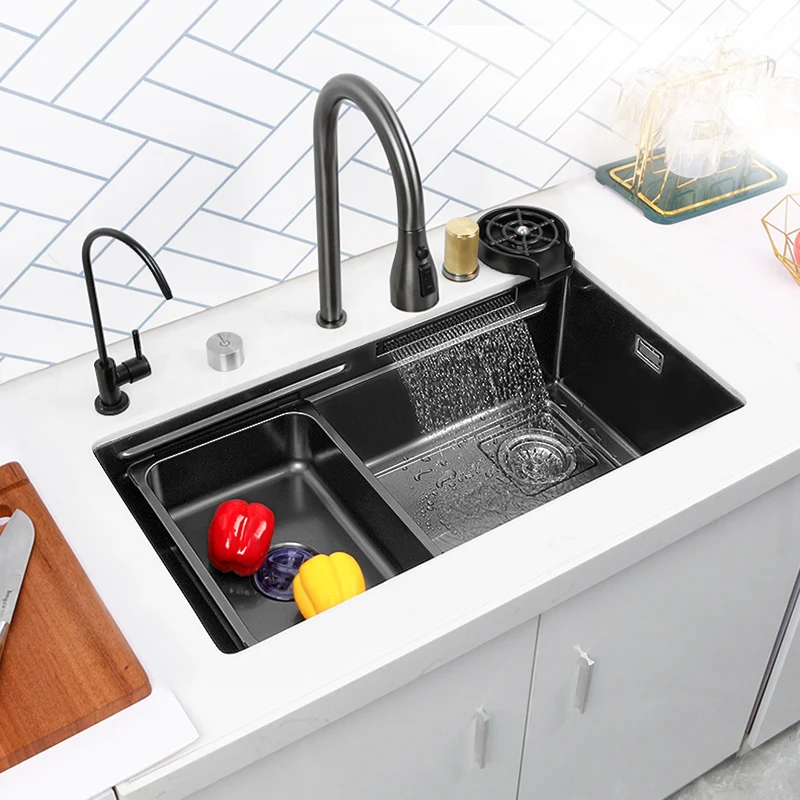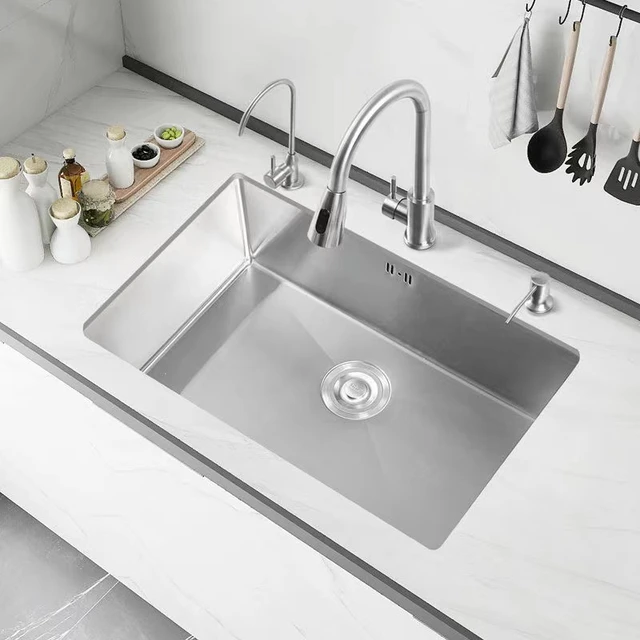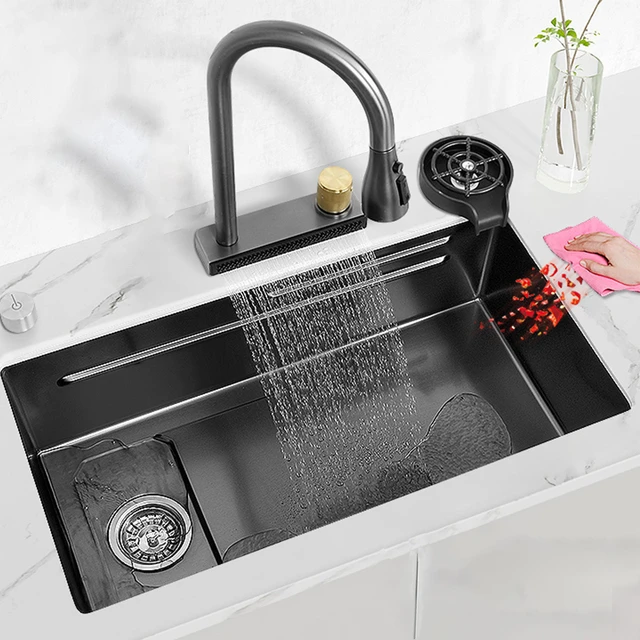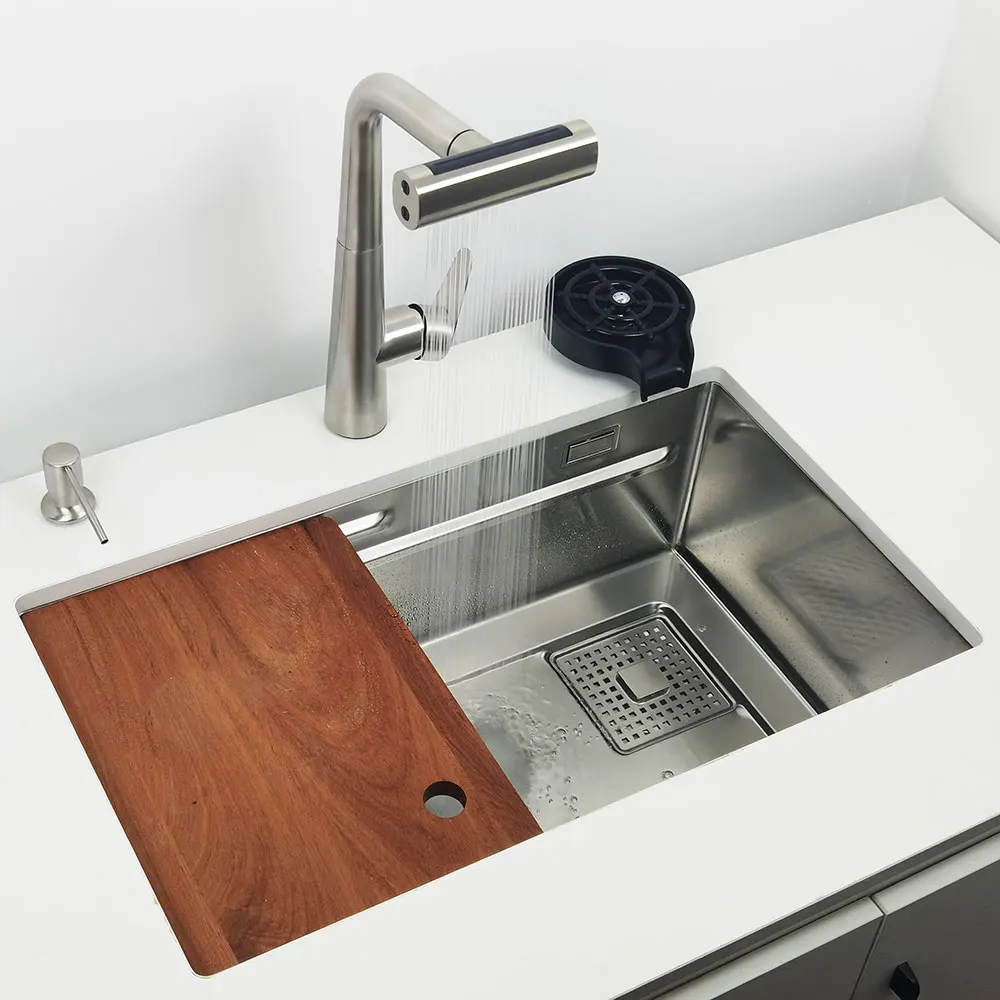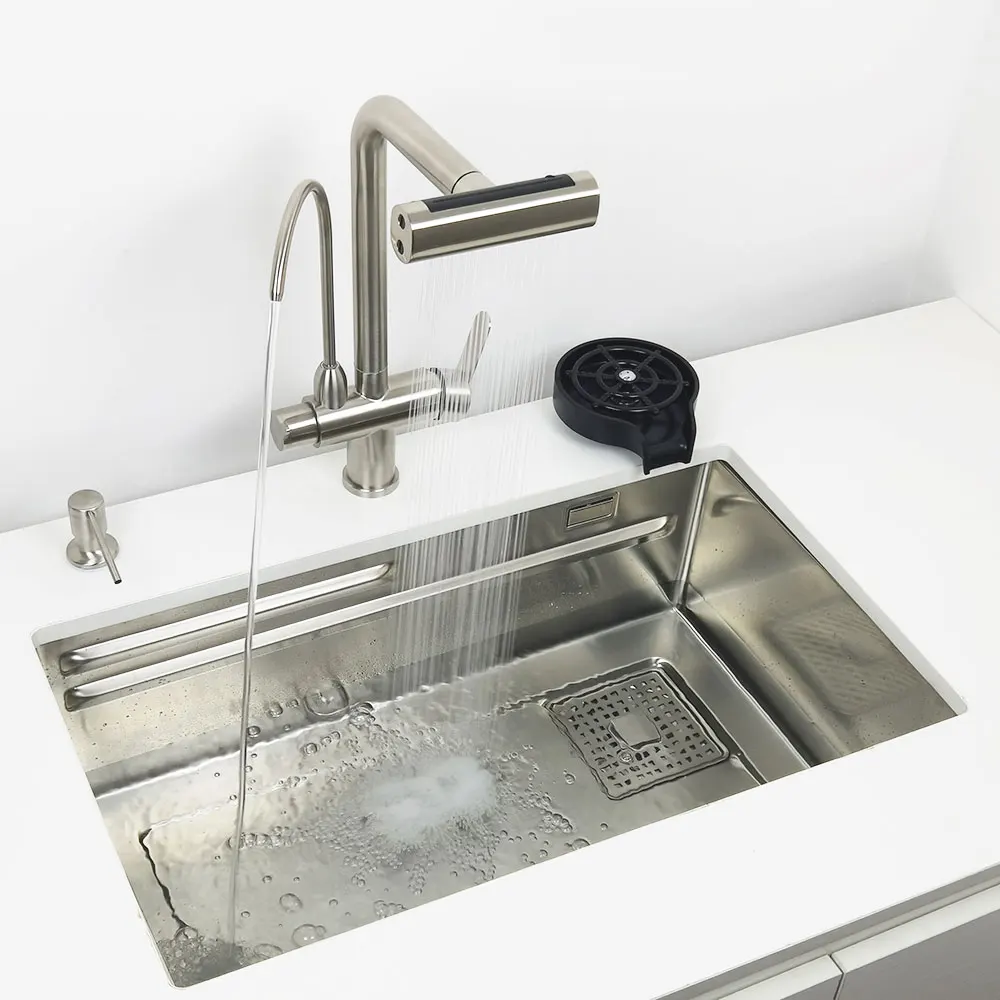Introduction:
Stainless steel kitchen sinks undermount are increasingly popular choices for modern kitchens, offering durability, functionality, and aesthetic appeal. These sinks are installed underneath the countertop, creating a seamless and sleek look while providing a spacious and versatile workspace.
In this article, we will explore the benefits, design considerations, maintenance tips, and overall appeal of stainless steel kitchen sinks undermount. By understanding these aspects, you can make an informed decision when choosing a sink that complements your kitchen’s style and meets your practical needs.
Benefits of Stainless Steel Kitchen Sinks Undermount:
Durability:
Stainless steel sinks are known for their exceptional durability, resisting stains, scratches, and heat. They are highly resistant to rust and corrosion, ensuring long-lasting performance.
Hygiene:
Stainless steel has a non-porous surface, making it resistant to bacteria, mold, and mildew. It is easy to clean and maintain a hygienic kitchen environment.
Versatility:
Stainless steel sinks undermount can complement various kitchen styles, from contemporary to traditional. They come in various shapes and sizes to accommodate different needs.
Noise Reduction:
These sinks are often equipped with sound-absorbing technology, reducing noise from running water and the clatter of dishes.
Design Considerations:
Sink Size and Configuration:
Consider the size of your kitchen and the amount of space available for the sink. Choose a size and configuration that suits your needs, such as a single bowl, double bowl, or triple bowl sink.
Gauge:
The gauge refers to the thickness of the stainless steel. Lower gauge sinks are thicker and more durable. Consider the optimal gauge for your usage requirements and budget.
Depth: T
he depth of the sink affects its versatility and functionality. A deeper sink provides more space for larger pots and pans, while a shallower sink may be more comfortable for shorter individuals.
Shape and Style:
Select a sink shape and style that complements your kitchen design. Popular choices include rectangular, square, or rounded bowls.
Maintenance and Care Tips:
Regular Cleaning:
Clean the sink after each use with mild soap and water, rinsing thoroughly and wiping dry to prevent water spots and mineral deposits.
Avoid Harsh Cleaners:
Refrain from using abrasive cleaners, bleach, or ammonia, as these can damage the sink’s finish. Instead, opt for gentle cleaning solutions specifically formulated for stainless steel surfaces.Prevent Scratches: Use a sink grid or mat to protect the sink’s surface from scratches caused by pots, pans, or utensils. Avoid using steel wool or abrasive sponges for cleaning.
Mineral Deposit Removal:
Remove mineral deposits or hard water stains by soaking the sink in a solution of equal parts water and vinegar. Scrub gently with a soft cloth or sponge, then rinse thoroughly.
Towel Drying:
To maintain the sink’s appearance and prevent water spots, dry the sink with a clean, soft cloth after each use.
Additional Considerations:
Insulation and Sound Dampening:
Some stainless steel sinks undermount come with insulation pads or coatings to reduce noise caused by water flow and impact while improving heat retention and condensation reduction.
Accessories:
Consider adding accessories such as cutting boards, colanders, or drying racks that are designed to fit your specific sink model, enhancing its functionality and convenience.
Longevity and Value:
Stainless steel kitchen sinks undermount are known for their longevity, often outlasting other sink materials.
They retain their appearance and performance over time, making them a valuable investment for your kitchen.
Installation and Maintenance Professionals:
Seek professional installation to ensure proper fit and secure mounting of the sink under the countertop.
Consult with professionals experienced in stainless steel sink maintenance for specific care requirements and recommendations.
How to Choose:
Size and Configuration:
Consider the available space in your kitchen and the size of your countertop. Choose a sink that fits comfortably within the dimensions and complements the overall design.
Determine the number of bowls you need based on your cooking habits and the size of your cookware. Options include single bowl, double bowl, or even triple bowl sinks.
Gauge:
Stainless steel sinks have different gauges, which refer to the thickness of the steel. The lower the gauge number, the thicker and more durable the sink.
Consider the gauge based on your usage and preferences. Thicker gauges (around 16 to 18) offer greater durability but come at a higher price point.
Depth and Capacity:
Consider the depth of the sink based on your needs and preferences. Deeper sinks can accommodate larger pots and pans, while shallower sinks are more comfortable for shorter individuals.
Determine the capacity you require based on your cooking and cleaning needs. A larger sink allows for more workspace and can accommodate more dishes.
Quality and Finish:
Look for a high-quality stainless steel sink that is made from premium 304-grade stainless steel, as it offers better resistance to corrosion and staining.
Choose a sink with a brushed or satin finish, as it hides scratches and water spots better than a polished finish.
Soundproofing and Insulation:
Consider sinks with sound-absorbing pads or coatings that reduce noise from water flow and impact. This feature is especially beneficial for open-concept kitchens or if you prefer a quieter environment.
Drainage and Slope:
Look for a sink with good slope and drainage capabilities to ensure efficient water drainage and prevent water pooling.
Check if the sink has a rear-set drain, as it allows for more usable space in the sink.
Accessories and Features:
Consider the availability of accessories such as cutting boards, colanders, drying racks, or bottom grids that enhance the functionality and convenience of the sink.
Look for sinks with appropriate hole configurations for faucet and accessory installations.
Price and Warranty:
Set a budget for your sink purchase and compare prices among different brands and models.
Check the warranty offered by the manufacturer to ensure protection against any manufacturing defects.
Reviews and Recommendations:
Read customer reviews and seek recommendations from professionals or friends who have purchased stainless steel undermount sinks. Their experiences can provide valuable insights.
By considering these factors, you can select a stainless steel kitchen sink undermount that meets your specific needs in terms of size, durability, functionality, and overall design. Take the time to research and compare different options to make an informed decision and invest in a high-quality sink that will serve you well for years to come.
Conclusion:
Stainless steel kitchen sinks undermount provide a durable, hygienic, and visually appealing option for modern kitchens. With their exceptional durability, versatility, and low-maintenance properties, these sinks meet the demands of a busy kitchen while complementing various design styles. By considering the benefits, design considerations, and maintenance tips, you can choose a stainless steel sink undermount that enhances your kitchen’s functionality and aesthetic appeal. Enjoy the convenience and longevity of a well-chosen stainless steel kitchen sink undermount, creating a beautiful and efficient workspace for your culinary adventures.
